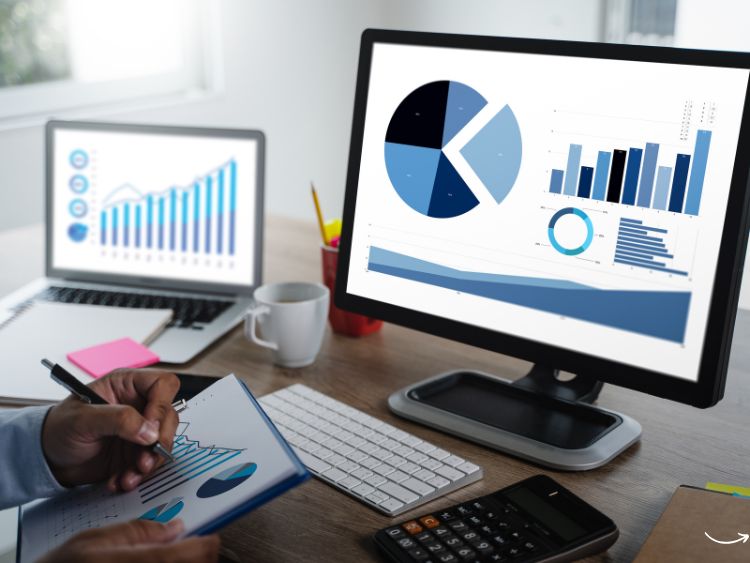In today’s fast-paced, data-driven world, business analytics has become an essential tool for companies striving to stay ahead of the competition. But what exactly is business analytics, and how can it benefit your organization? This article will provide a comprehensive introduction to business analytics, covering its core concepts, applications, and the various tools and techniques used in the field. Let’s dive in!
What is Business Analytics?
Business analytics refers to the practice of using data analysis and statistical methods to make informed business decisions. It involves collecting, processing, and analyzing data to uncover patterns, trends, and insights that can help businesses improve their operations, increase efficiency, and drive growth. At its core, business analytics is about turning raw data into actionable insights.
The Three Types of Business Analytics
Business analytics can be categorized into three main types: descriptive, predictive, and prescriptive. Each type serves a unique purpose and provides different insights:
- Descriptive Analytics: This type of analytics focuses on summarizing historical data to understand what has happened in the past. It uses techniques such as data visualization, dashboards, and reports to provide a clear picture of past performance.
- Predictive Analytics: Predictive analytics uses statistical models and machine learning algorithms to forecast future outcomes based on historical data. It helps businesses anticipate trends, identify potential risks, and make proactive decisions.
- Prescriptive Analytics: Prescriptive analytics goes a step further by recommending specific actions based on predictive insights. It uses optimization algorithms and simulation techniques to suggest the best course of action for achieving desired outcomes.
The Importance of Business Analytics
Business analytics offers numerous benefits that can significantly impact an organization’s success. Here are some key reasons why business analytics is important:
Improved Decision-Making
One of the primary advantages of business analytics is its ability to enhance decision-making processes. By providing data-driven insights, businesses can make more informed and accurate decisions, reducing the reliance on gut feelings and intuition. This leads to better outcomes and minimizes the risk of costly mistakes.
Increased Efficiency and Productivity
Business analytics helps identify inefficiencies and bottlenecks in business processes, enabling organizations to streamline operations and improve productivity. By analyzing data, businesses can pinpoint areas where resources are being wasted and implement measures to optimize performance.
Enhanced Customer Experience
Understanding customer behavior and preferences is crucial for delivering personalized experiences. Business analytics allows companies to analyze customer data, segment their audience, and tailor products and services to meet specific needs. This results in higher customer satisfaction and loyalty.
Competitive Advantage
In today’s competitive landscape, staying ahead of the competition is vital. Business analytics provides organizations with valuable insights into market trends, competitor strategies, and industry developments. Armed with this information, businesses can develop innovative strategies, identify new opportunities, and gain a competitive edge.
Tools and Techniques in Business Analytics
Business analytics relies on a variety of tools and techniques to collect, process, and analyze data. Let’s explore some of the most commonly used ones:
Data Collection and Storage
To perform business analytics, organizations need to collect and store large volumes of data. Common data collection methods include surveys, website analytics, social media monitoring, and transactional data from point-of-sale systems. The collected data is then stored in databases, data warehouses, or cloud-based storage solutions.
Data Processing and Cleaning
Raw data often contains errors, inconsistencies, and missing values. Data processing and cleaning techniques are used to transform raw data into a usable format. This involves tasks such as data validation, data imputation, and data normalization to ensure data quality and accuracy.
Data Analysis and Visualization
Data analysis techniques involve using statistical methods, machine learning algorithms, and data mining techniques to uncover patterns and insights. Commonly used tools for data analysis include Python, R, and SQL. Data visualization tools like Tableau, Power BI, and Google Data Studio are used to create interactive dashboards and visual representations of data.
Predictive Modeling
Predictive modeling involves building statistical models and machine learning algorithms to forecast future outcomes. Techniques such as regression analysis, decision trees, and neural networks are commonly used for predictive modeling. These models can be trained on historical data to make accurate predictions and identify potential risks.
Prescriptive Analytics
Prescriptive analytics involves using optimization algorithms and simulation techniques to recommend specific actions. Techniques such as linear programming, Monte Carlo simulation, and genetic algorithms are used to find the best solutions for complex business problems. These recommendations help organizations make data-driven decisions and achieve desired outcomes.
Applications of Business Analytics
Business analytics can be applied across various industries and functions to drive growth and improve performance. Here are some common applications of business analytics:
Marketing and Sales
Business analytics plays a crucial role in marketing and sales by providing insights into customer behavior, campaign effectiveness, and sales performance. By analyzing customer data, businesses can segment their audience, identify high-value customers, and develop targeted marketing strategies. Sales analytics helps optimize pricing, improve sales forecasting, and identify cross-selling and upselling opportunities.
Finance and Accounting
In the finance and accounting domain, business analytics is used for financial forecasting, budgeting, and risk management. By analyzing financial data, organizations can identify trends, assess financial performance, and make informed investment decisions. Business analytics also helps detect fraud, optimize cash flow, and improve financial planning processes.
Supply Chain and Operations
Business analytics is essential for optimizing supply chain and operations management. By analyzing data from suppliers, production processes, and logistics, businesses can identify bottlenecks, reduce costs, and improve efficiency. Predictive analytics helps forecast demand, optimize inventory levels, and enhance supply chain visibility.
Human Resources
In the realm of human resources, business analytics helps organizations manage their workforce more effectively. By analyzing employee data, businesses can identify patterns in employee performance, turnover rates, and recruitment effectiveness. This information can be used to develop talent management strategies, improve employee engagement, and optimize workforce planning.
Healthcare
Business analytics has significant applications in the healthcare industry. By analyzing patient data, healthcare providers can identify trends in disease prevalence, predict patient outcomes, and optimize treatment plans. Business analytics also helps improve operational efficiency, reduce costs, and enhance patient care.
Frequently Asked Questions (FAQs)
What skills are required for a career in business analytics?
A career in business analytics requires a combination of technical and analytical skills. Key skills include data analysis, statistical modeling, programming (e.g., Python, R), data visualization, and knowledge of business operations. Strong problem-solving abilities, critical thinking, and communication skills are also essential.
How can small businesses benefit from business analytics?
Small businesses can benefit from business analytics by gaining insights into customer behavior, optimizing marketing efforts, improving operational efficiency, and making data-driven decisions. Affordable analytics tools and cloud-based solutions make it accessible for small businesses to leverage the power of data.
What are the challenges of implementing business analytics?
Implementing business analytics can be challenging due to data quality issues, lack of skilled personnel, integration with existing systems, and data privacy concerns. Organizations need to invest in data management practices, training, and technology infrastructure to overcome these challenges.
How does business analytics differ from business intelligence?
While business analytics and business intelligence are closely related, they differ in their focus and approach. Business intelligence primarily deals with reporting and analyzing historical data to understand past performance. Business analytics, on the other hand, focuses on using data analysis and statistical methods to make predictions and prescribe actions for future outcomes.
Conclusion
In conclusion, business analytics is a powerful tool that enables organizations to harness the power of data and make informed decisions. By leveraging descriptive, predictive, and prescriptive analytics, businesses can gain valuable insights, improve efficiency, enhance customer experience, and gain a competitive advantage. Whether you’re a small business owner or a large enterprise, understanding and implementing business analytics can drive growth and success.
Authoritative Links
- https://www.tableau.com/learn/articles/business-analytics
- https://www.gartner.com/en/information-technology/glossary/business-analytics
- https://www.ibm.com/analytics/business-analytics
- https://www.sas.com/en_us/insights/analytics/business-analytics.html
- https://hbr.org/2012/09/big-data-the-management-revolution






